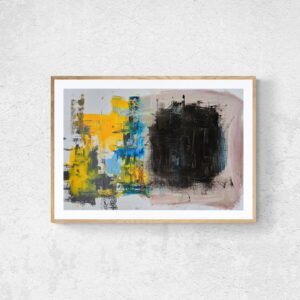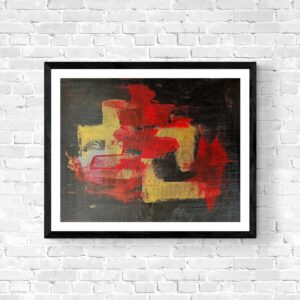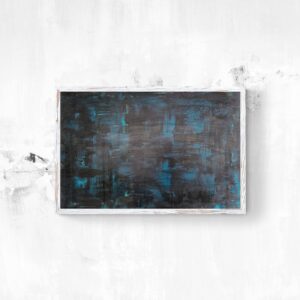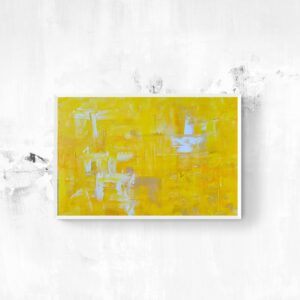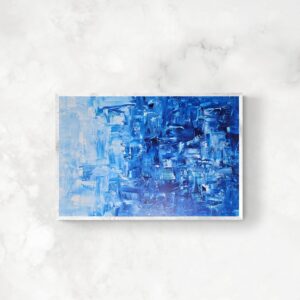
SANTA FE — Every third weekend in August, New Mexico’s capital becomes a hub of Indigenous creativity for the Santa Fe Indian Market, hosted by the Southwestern Association for Indian Arts (SWAIA). This year, the air felt charged as lightning propelled down from monsoon-filled clouds at the start of the weekend, but it didn’t take long for the skies to clear. For its 103rd edition, over 1,000 artists from more than 200 tribal nations showcased works around Santa Fe Plaza on Saturday and Sunday, drawing more than 100,000 attendees from around the world.
Historically, the Santa Fe Indian Market has evolved to meet artists’ needs in tandem with shifting bureaucratic tides, and funding cuts, censorship, and resource extraction were topics of conversation. Posters wheatpasted around the Plaza alluded to lingering political tensions regarding the city’s dependence on cultural tourism and Santa Fe Indian Market’s ethnographic origins.
“There’s a lot at risk this year,” Jamie Schulze (Northern Cheyenne/Sisseton Wahpeton Oyate), executive director of SWAIA, told Hyperallergic. She emphasized that gathering in community is a vital way to exchange information and strengthen intertribal connections.


Schulze said that many artists credit the market as a foundational early-career catalyst. Official programming has expanded to include a burgeoning film festival and a fashion show debuting cutting-edge couture from acclaimed Indigenous designers. These feats of organizational planning are steered by a small team of women, most of whom are Native.
Winners across 10 classifications in this year’s Best of Show juried exhibition were announced at a reception on Friday afternoon. Regina Free (Chickasaw) received the singular award and Best of Sculpture for “Windswept (Bison)” (2025), a contemplative bison bust constructed out of upcycled materials.


For Carmen Selam (Yakama Nation), who was exhibiting an array of paintings, prints, and jewelry, this was her first year participating. As a queer contemporary artist, she said the feeling of belonging within the market’s rich artistic tradition was incredibly gratifying. “Native people, we’re a living culture, and our culture isn’t static,” she said. “So I love being a part of this.”
Other artists spoke to artmaking’s capacity for healing. Melissa Freeman (Chickasaw/Choctaw Nation of Oklahoma), another first-timer, was thrilled to receive a second-place ribbon in the Textiles classification for the garment she crafted to honor her late father: a Choctaw diamond dress that drew passersby with its striking black brocade and iridescent beads.
“It’s been a great experience to come here and see so many artists — and to be able to display my work and actually place,” she told Hyperallergic. A few blocks away, Lonnie Vigil (Nambé Pueblo) spoke about his experience working with micaceous clay over the last 40 years as an ongoing practice of meditation and introspection.

Hiro Cash (Diné), a painter from Gallup, New Mexico, and a student at the Institute for American Indian Arts (IAIA) in Santa Fe, presented a series of large abstract canvases. Black metal and punk music are significant influences on his work, reminiscent of a collaboration between Jean-Michel Basquiat and Jaune Quick-to-See Smith (Confederated Salish and Kootenai Nation) if the late painters had teamed up to design a Misfits album cover.
Cash remarked on the art world’s tendency to view Indigenous artists through a constricted lens. “Even though I am Native American, my work doesn’t have to be categorized as ‘Indian art,’” he said. His message for other artists was to “do what you want to do and just kick ass at it.”

Creative seeds dispersed by the market year after year have bloomed into a city-wide ecosystem of commerce, trade, performances, fashion shows, and multidisciplinary exhibitions. Yet in a municipality heavily dependent on cultural tourism with over 250 galleries, only a handful are Native-owned, according to independent curator Jamie Herrell (Cherokee).
Of these brick-and-mortar strongholds, Cara Romero (Chemehuevi) debuted New Mythos on Thursday evening at her gallery space in the Railyard, co-curated with Herrell and featuring eight diverse Indigenous artists. Niman Fine Art, established in 1990 by the Namingha family of Hopi-Tewa artists, presented a new selection of works by Dan, Arlo, and Michael Namingha in their gallery near the Plaza on Friday.

Elsewhere in Santa Fe, a panel with Romero, Kent Monkman (Fisher River Cree Nation), Nicholas Galanin (Sitka, Tlingit, Unangax̂), and Tony Abeyta (Diné) coincided with another exhibition exploring humor as an act of Indigenous resistance. Solo exhibitions by Diego Medina (Piro-Manso-Tiwa) and Marcus Xavier Chormicle (Agua Caliente Band of Cahuilla Indians, second lineal descendant) opened alongside a pop-up market and free book fair organized by NDN Girls Book Club.
On Friday and Sunday evening, people shuttled out to Tesuque for the experimental Malinxe opera, directed by Autumn Chacon (Diné/Chicana) for the ongoing 12th SITE Santa Fe International. Scored by Laura Ortman (White Mountain Apache), the conjectural, asynchronous reimagining of La Malinche and La Llorona folklore starred Marisa Demarco and Jeffrey Gibson (Mississippi Band Choctaw/Cherokee). IAIA’s Museum of Contemporary Native Art (MoCNA) hosted its annual Student and Recent Graduate Art Market in its museum courtyard north of the Plaza and the new multimedia exhibition Breaking Ground: Art & Activism in Indigenous Taiwan.


Long before Europeans arrived in the Americas, O’ga P’ogeh Owingeh (now known as Santa Fe) was a site of exchange for Indigenous people across the Americas. It remains an important cultural nexus for Tewa people, which include the Pueblos of Nambé, Pojoaque, San Ildefonso, Ohkay Owingeh, Santa Clara, and Tesuque. Today, as Indigenous people throughout the United States face new threats to land sovereignty and trust responsibilities, the Santa Fe Indian Market continues to grow, opening portals of opportunity for artists within its ever-expanding orbit.



